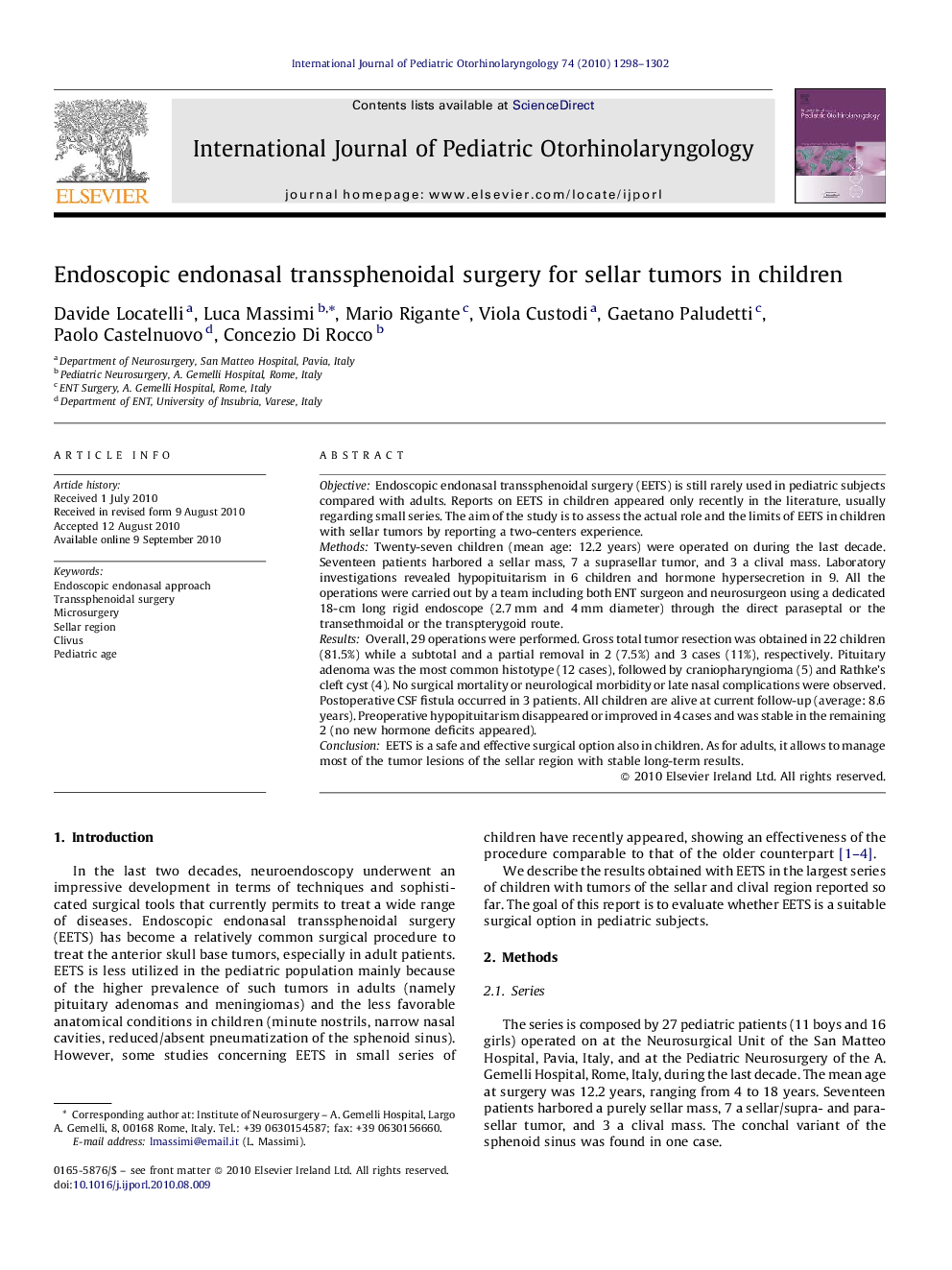| Article ID | Journal | Published Year | Pages | File Type |
|---|---|---|---|---|
| 4113624 | International Journal of Pediatric Otorhinolaryngology | 2010 | 5 Pages |
ObjectiveEndoscopic endonasal transsphenoidal surgery (EETS) is still rarely used in pediatric subjects compared with adults. Reports on EETS in children appeared only recently in the literature, usually regarding small series. The aim of the study is to assess the actual role and the limits of EETS in children with sellar tumors by reporting a two-centers experience.MethodsTwenty-seven children (mean age: 12.2 years) were operated on during the last decade. Seventeen patients harbored a sellar mass, 7 a suprasellar tumor, and 3 a clival mass. Laboratory investigations revealed hypopituitarism in 6 children and hormone hypersecretion in 9. All the operations were carried out by a team including both ENT surgeon and neurosurgeon using a dedicated 18-cm long rigid endoscope (2.7 mm and 4 mm diameter) through the direct paraseptal or the transethmoidal or the transpterygoid route.ResultsOverall, 29 operations were performed. Gross total tumor resection was obtained in 22 children (81.5%) while a subtotal and a partial removal in 2 (7.5%) and 3 cases (11%), respectively. Pituitary adenoma was the most common histotype (12 cases), followed by craniopharyngioma (5) and Rathke's cleft cyst (4). No surgical mortality or neurological morbidity or late nasal complications were observed. Postoperative CSF fistula occurred in 3 patients. All children are alive at current follow-up (average: 8.6 years). Preoperative hypopituitarism disappeared or improved in 4 cases and was stable in the remaining 2 (no new hormone deficits appeared).ConclusionEETS is a safe and effective surgical option also in children. As for adults, it allows to manage most of the tumor lesions of the sellar region with stable long-term results.
